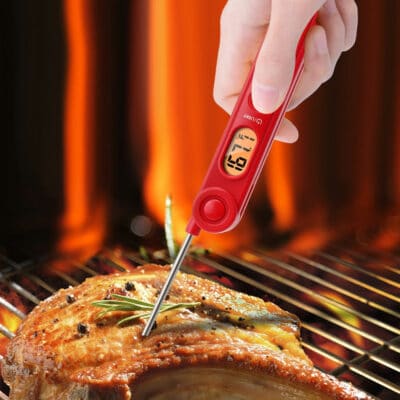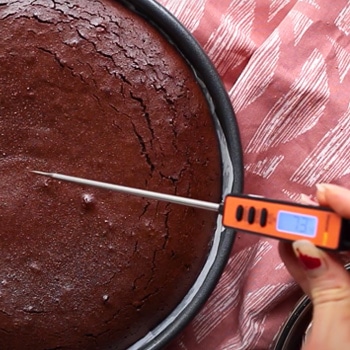The customer service team is always listening, taking notes, and quantifying complaints to ensure our products are continually improved. Due to selling directly to you, the customer, via Amazon, we can use product reviews to help us improve our existing products or help further development of new products.
How to Use a Meat Thermometer the Right Way
In the kitchen, few tools are as reliable and necessary as the meat thermometer. This practical tool serves the important function of letting you know when your food has finished cooking without any guesswork. By cooking according to temperature instead of time or appearance, home chefs can achieve restaurant-quality results every time without fail.
As fool-proof as these advanced devices are, meat thermometers need to be used in a specific way in order to provide the maximum benefit. In fact, one improper way of using thermometers can even get you sick if you’re not careful.
Discover the proper way to use a cooking thermometer by following the expert advice listed below.

Tip #1: Proper Placement
A digital meat thermometer can provide precise measurements, but it won’t matter if you don’t put it in the right place. As ThermoPro Vice President Reed Lalor explains, you can improve your results by being more selective with your placement. “Insert the probe tip into the thickest middle part of the food, avoiding bones and fat,” said Reed. “Inserting the probe into a cold spot or hot spot can result in improperly cooked food.” Each ingredient will have its own optimal areas for temperature measurement. Breasts are better for turkeys due to their meatiness, just as it is best to test the girth of lamb legs at their widest. Make sure not to touch any internal bones to achieve the highest levels of accuracy.Tip #2: Be Proactive with Timing
For this reason, it’s important to be proactive with your cooked food. Before reaching your target temperature, make a habit of checking your food.
“If you’re using an instant-read thermometer, check the internal temperature a couple minutes before the estimated finish time,” Lalor recommends. “This will help you reach the perfect internal temperature.”

Tip #3: Use the Meat Thermometer on Various Ingredients
Meat thermometers are very effective at measuring temperatures for meats like chicken, beef, and pork. As proof of their capabilities, it only makes sense that meat thermometers can be used for all sorts of food in addition to meat.
“It can also be used for fish, seafood, deep frying, measuring the temperature of oil and liquids, and more,” Lalor says. “It can even be used for making candy if it’s within the thermometer’s temperature range.”
Tip #4: Keep the Meat Thermometer Clean
Cooking thermometers are mainly used to test cooked food for its readiness. However, these implements also have the ability to test raw ingredients. If this is a familiar practice for you, it’s important that you keep the meat thermometer clean in order to avoid getting sick.
“Transferring the probe from an uncooked piece of meat to a near-done piece of meat can potentially contaminate the almost-cooked piece of meat with salmonella or other bacteria,” Lalor warns. “Wipe the probe with a damp, soapy cloth to avoid contamination.”
Although meat thermometers feature a wide range when it comes to temperature measurements, it’s best to limit your testing to the end of the cooking process. This way, you can keep the digital cooking thermometer completely free of any contaminants.
Tip #5: Let the Thermometer Be Your Guide
When your diners bring high expectations and big appetites to every meal, it can be difficult to break out of a tried-and-true routine. However, you can easily avoid disappointment when experimenting with new, untried dishes by using thermometers as your guide.
“Meat thermometers are a great help when cooking a new type of meat or food you’ve never cooked before,” Lalor says. By cooking according to the ideal temperature of the cooked ingredient, you can create delicious, nutritious dishes without any prior experience or knowledge.








